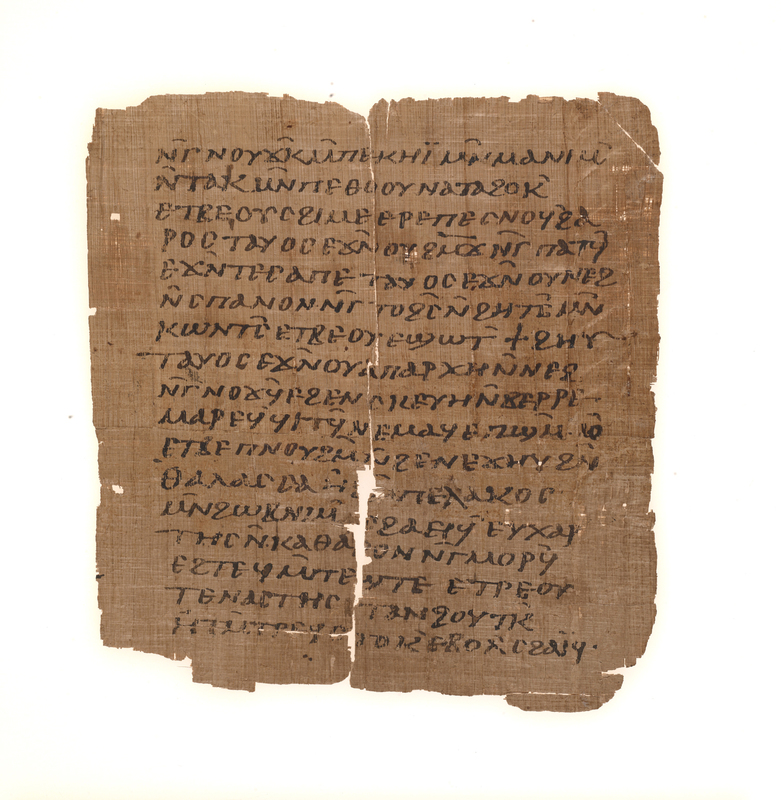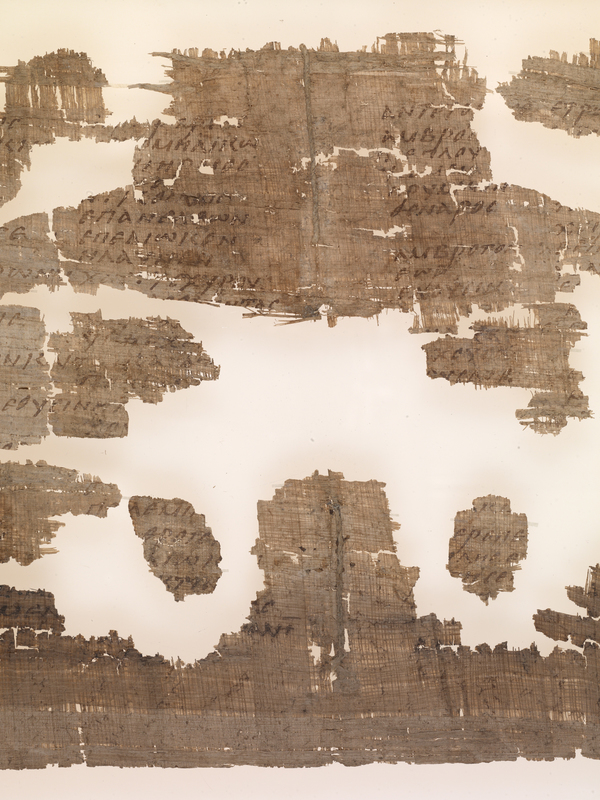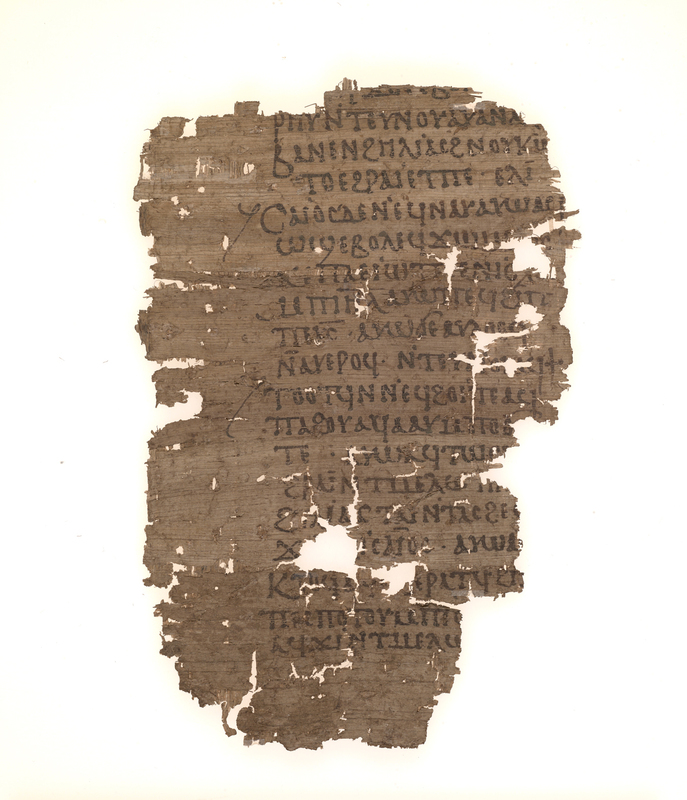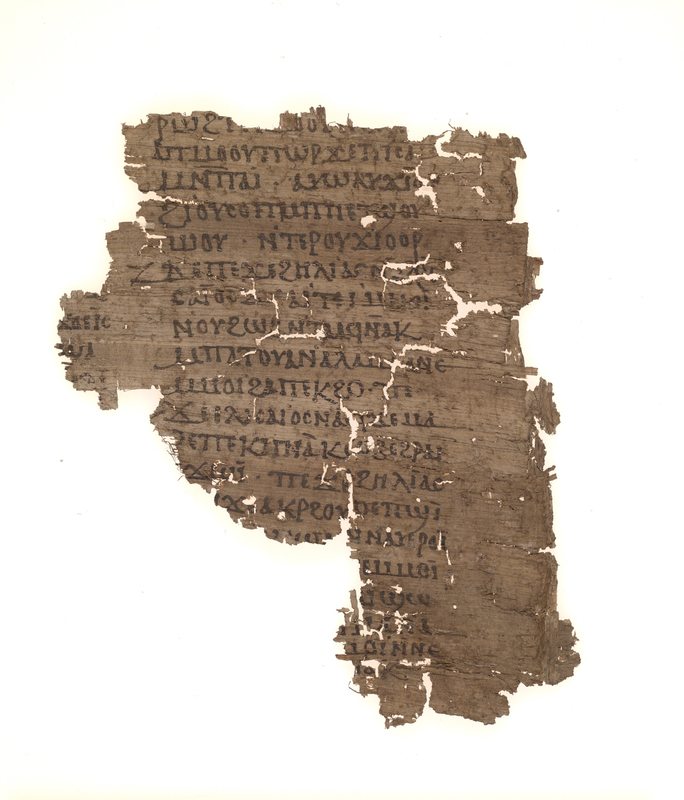Homer & The Old Testament
P. Mich. Inv. 2720 (6v and 7r)
Here on your right is a codex with fragments of six surviving sheets. None of the sheets are intact, though the folded sheet identified as Folio 6v and 7r retains most of its inner margin or spine area, enough to support the two tacket or sewing cords that survive in this center fold of the quire. The codex is written in Greek with two columns to a page, the lemma (premise) on the left, the gloss (interpretation) on the right. The codex is described as a scholia minora, or ancient commentary, on the Illiad of Homer, dating from the fifth or sixth century. This was a large codex; the dimensions are approximately 27 cm high by 35 cm wide when open. The surviving upper thread measures 6.5 cm long, the lower thread 6.0 cm. The width of the inner margin is approximately 3.5 cm. The ends of the two threads pass through the center fold and are cleanly snipped off on the other side.
P. Mich. Inv. 607a (recto)
Here we have two leaves of a papyrus codex with an Old Testament fragment of Kingdoms IV written in Sahidic. This particular text is not otherwise known to exist in Coptic. The fragments are believed to have come from the White Monastery in Upper Egypt, are dated to the first half of the ninth century, and measure approximately 20.7 cm high x 14.2 cm wide. There is evidence that there were two columns of writing per page, which would make the measurements of an intact page approximately double the width, approximately 28 cm wide. The many small holes in the spine margins of both pages of P. Mich. Inv. 607 make it difficult to tell which holes, if any, were made for attaching the sheets of this codex together.
Note the simple graceful paragraph marks to the left of text lines on this page. This style of paragraph mark is known as a "coronis." Paragraph marks were used to mark divisions of a text and have been found as early as the fourth century on Coptic manuscripts. The simple style of coronis used on this manuscript developed over time into the extremely elaborate ink-and-painted paragraph marks found on later Coptic manuscripts.The use of such marks ended or merged with the later use of enlarged capitals to begin a division of a text.
P. Mich. Inv. 607b (verso)
The second leaf provides an important bit of information: it retains a length of thread in the lower spine-edge portion of the fragment (on the right, bottom). The ends are neatly clipped, and even under magnification, there is no clear evidence of holes pierced for the passage of this thread to hold the quire together. Is this a tacket or sewing thread? We can only guess that it was one or the other.

A Text on Medicine & Magic

Decorated Leather Cover Fragments



